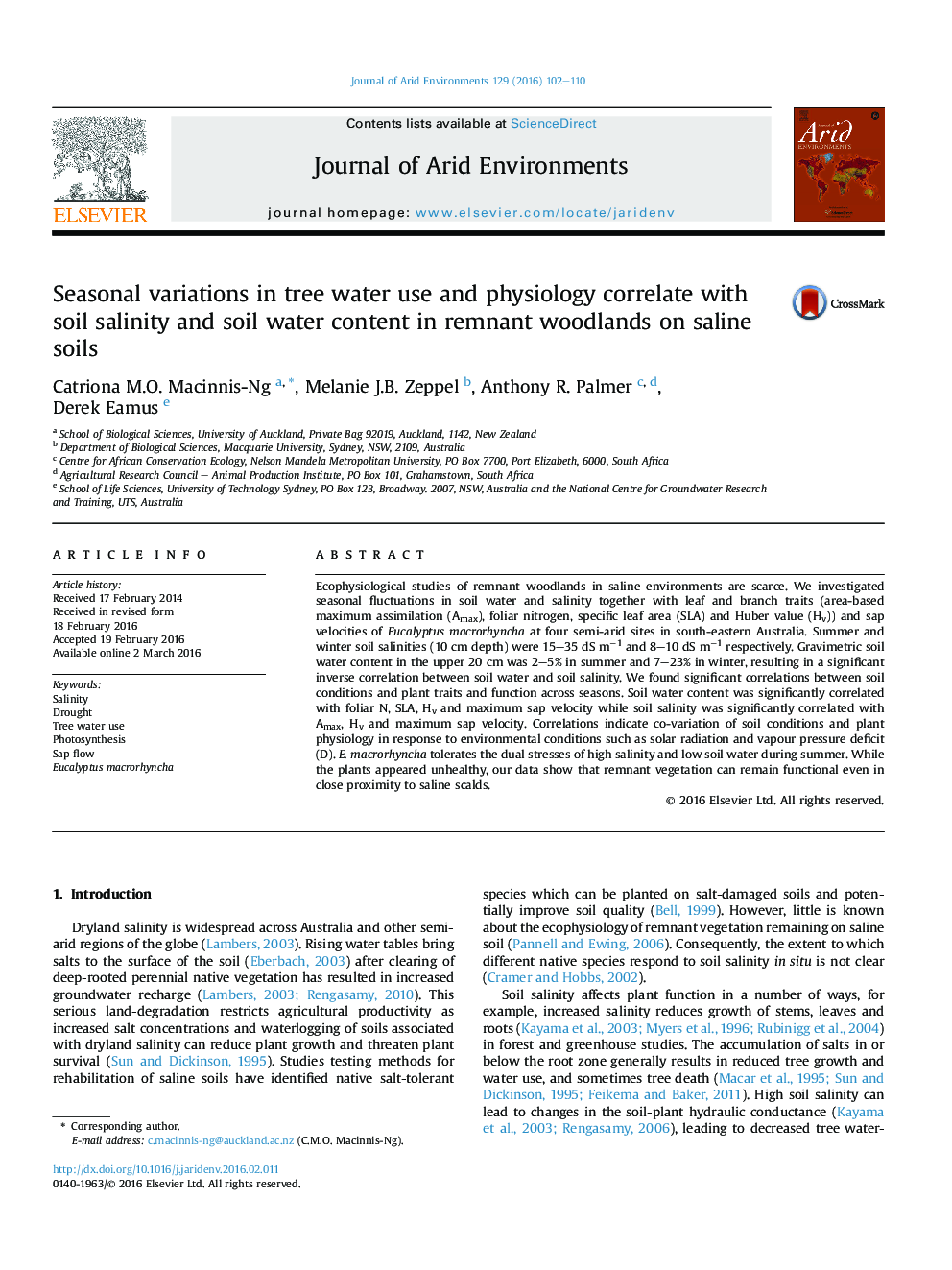| Article ID | Journal | Published Year | Pages | File Type |
|---|---|---|---|---|
| 4392740 | Journal of Arid Environments | 2016 | 9 Pages |
•Dryland salinity is a significant problem in semi-arid regions of the world.•Woodlands combat salinity by lowering groundwater, reducing surface salt.•We measured seasonal carbon assimilation, water use, soil salinity and water content.•Some plant functional measurements were correlated with some soil measurements.•Seasonal changes in meteorology drove unexpected plant-soil relationships.
Ecophysiological studies of remnant woodlands in saline environments are scarce. We investigated seasonal fluctuations in soil water and salinity together with leaf and branch traits (area-based maximum assimilation (Amax), foliar nitrogen, specific leaf area (SLA) and Huber value (Hv)) and sap velocities of Eucalyptus macrorhyncha at four semi-arid sites in south-eastern Australia. Summer and winter soil salinities (10 cm depth) were 15–35 dS m−1 and 8–10 dS m−1 respectively. Gravimetric soil water content in the upper 20 cm was 2–5% in summer and 7–23% in winter, resulting in a significant inverse correlation between soil water and soil salinity. We found significant correlations between soil conditions and plant traits and function across seasons. Soil water content was significantly correlated with foliar N, SLA, Hv and maximum sap velocity while soil salinity was significantly correlated with Amax, Hv and maximum sap velocity. Correlations indicate co-variation of soil conditions and plant physiology in response to environmental conditions such as solar radiation and vapour pressure deficit (D). E. macrorhyncha tolerates the dual stresses of high salinity and low soil water during summer. While the plants appeared unhealthy, our data show that remnant vegetation can remain functional even in close proximity to saline scalds.
